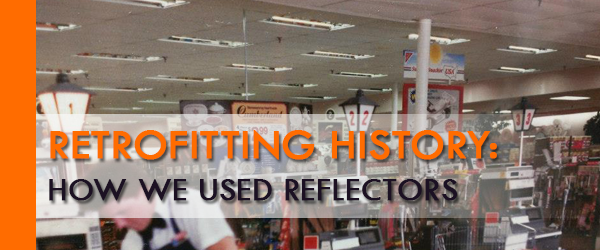The History of Retrofitting : Industry Insight from TRC Founder
Published May 2015

Steve Kath, TRC’s CEO and Founder, will be sharing his experiences in the lighting industry here in a series we’re calling The History of Retrofitting. Keep an eye out for Steve’s features. He’s starting off his series by recounting some of the energy-efficiency technologies that were popular almost 30 years ago, some that worked and some that did not. For more insight on lighting history, keep reading.
I have been in the lighting business for more than 28 years. During that time, I have seen the Good, Bad & Ugly of nearly every technology that has been designed to save money on electricity and/or maintenance while maintaining adequate light levels. Some of those technologies claimed to do both and proved to do so, while others failed to live up to their billing. I’m going to talk today about my experience with the “Good” and a product that wasn’t necessarily popular with lamp and ballast manufacturers.
Over the years, I have seen many good technologies used in the wrong application. Because of this misuse, many of them received a bad rap. They were unfairly labeled “that crap don’t work.” In reality, these products were installed improperly or used in the wrong application. Some were criticized for being “Smoke & Mirrors” because if they did work, they reduced the amount of products that some manufacturers would sell, cutting into the manufacturer’s profits. It’s important to consider whether the lighting products you choose or that the products presented to you by lighting vendors are being used in their intended way. It’s also good to consider if you are being presented products in a “vendor neutral” manner.
One of the first technologies that I was asked to sell was a silver reflector. The silver film was developed and manufactured by 3M. Seven companies were set up throughout the United States to design and bend the reflectors. The last one to set up shop was a company called Silverlight Corporation, located in Burr Ridge, IL and happened to be the one closest to 3M’s headquarters.
During this time, there were competitors making reflectors with a polished aluminum material. This created the Reflector Wars, each trying to prove that they had the better product. The silver reflectors were subject to tarnishing (like silver dishes) and had the potential of losing reflectivity, while the polished aluminum reflectors produced less light because it did not have the specular reflectivity of silver. This battle became very heated and continued into the early 1990’s. Manufacturers of lamps, ballasts, and fixtures were trying to discredit these products, because if the reflectors worked, their sales would be reduced.
In the early years, the design and installation of reflectors was very poor, and that is putting it kindly. It was also a lot of work and very time consuming to get a reflector made. The goal was to reduce the number of lamps and ballast by 50% while maintaining about 80% of the existing light levels. In an effort to accomplish this, a 2’x4’ fixture that was using four T12 lamps was sent to Silverlight and they would design a reflector to physically fit and produce the maximum amount of light using two of the existing lamps. The lamps and sockets would stay in their current position and the reflector would be screwed into the fixture housing with self-tapping tech screws. You would then use only two lamps and one ballast, therefore reducing the energy and maintenance costs by 50%. The performance and aesthetic look of the fixture was usually pretty good, but would soon get much better with a few improvements.
Some of those improvements included removing the existing sockets and replacing them with new sockets and a bracket. The new sockets and bracket would re-position the reflector, produce the maximum amount of light, and hold the reflector in place without any screws while improving the aesthetics of the fixture. These improvements were very successful in making reflectors a viable technology in the lighting industry.
The use of reflectors is still important today, and lighting design is greatly impacted by our ability to direct light from a fixture. This is a very important facet in energy-efficiency because when light doesn’t get to the places where it is needed, then it is wasted; however, that is jumping ahead in my story. In my next blog, I will discuss the introduction of some other technologies that were introduced to the lighting industry and did not perform to their stated claims.
Thanks, Steve, for this first look at some of the foundational energy-efficiency measures that you experienced. For more “historical” photos like the one above, check out our Facebook album “Retro Retrofits” and be sure to like or follow TRC for our regular updates there!